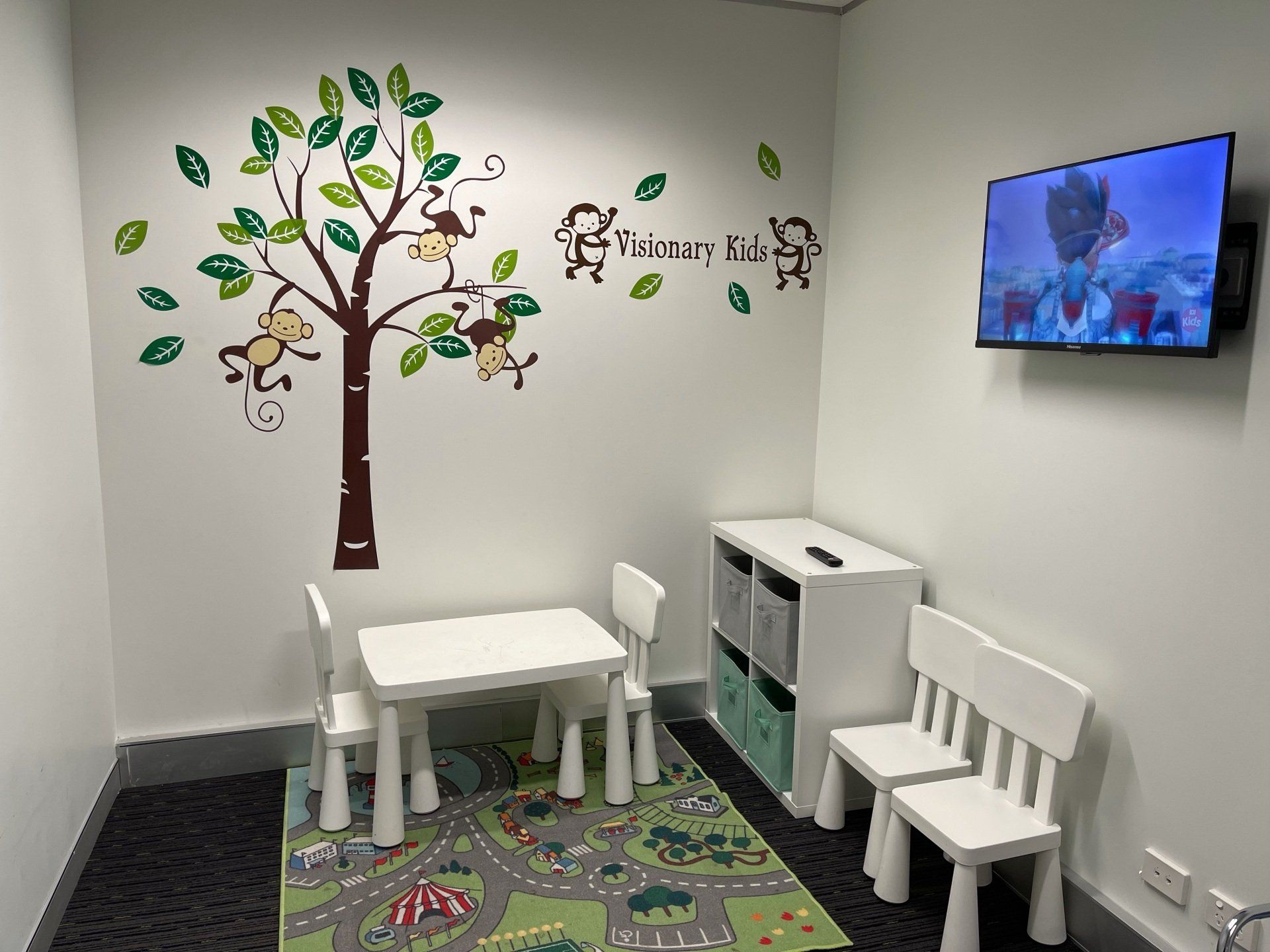Common Children's Eye problems
Please note: For most children the initial examination will involve eyedrops to dilate the pupils in order to complete a full and comprehensive examination. These drops can take 45 minutes to have their full effect, so please allow at least two hours for the entire consultation. It's a good idea to bring something to keep your child happy while waiting, such as an iPad or favourite toy/game.
Strabismus (Squint)
A squint occurs when the two eyes are not pointing in the same direction. Most commonly, one eye will turn in or out, but sometimes one eye could be sitting higher than the other. A squint can be present since birth or develop later in childhood. In some children, the eye will turn all the time (constant squint), in others it will turn sometimes (intermittent squint). An intermittent squint is usually more noticeable when the child is tired or when looking far away or close up.
The turned eye could lead to amblyopia or 'lazy eye' because the brain may be underdeveloped for vision in the turned eye. The lazy eye is usually treated by patching the stronger eye to strengthen the vision in the turned eye.
Sometimes glasses can help straighten the eyes. Once the lazy eye is treated, the eye could be straightened by surgery. Surgery only improves the alignment of the eyes and does not improve the vision. Squint surgery is usually done under general anaesthetic as a day procedure. This is usually well tolerated even in young children.
See our separate Strabismus page for more information.
Lazy Eye (Amblyopia)
Lazy eye (amblyopia) occurs when there is an interruption in the normal visual development during early childhood. This results in reduced vision in the lazy eye.
The common causes include:
- Strabismus/squint (a turned eye)
- Refractive error (the need to wear glasses)
- Obscuration of vision eg by cataract or a droopy eyelid
It is important to treat the lazy eye before the age of seven or eight as the outcome of treatment is better. The treatment is usually in the form of patching over the stronger eye, sometimes glasses are needed to sharpen the focus, and occasionally eye drops could be used to blur the vision in the better eye.
See our separate Amblyopia/Lazy eye page for more information
Myopia
Myopia ("near-sightedness") is a condition in which the optical system of the eye causes incoming light rays to focus in front of the retina, instead of focusing directly on the retinal surface. Various factors can cause this abnormal focus, including abnormalities of the lens or cornea, or by an eye that is abnormally long. Myopia is treated with glasses in younger children, or in some cases with contact lenses. Refractive surgery such as Lasik is generally reserved for adults except for certain limited studies in children less than 18 years of age.
High myopia, also called pathologic myopia, is generally defined as near-sightedness of -6.00 diopters or greater, or an axial length of more than 26.5mm. High myopia generally begins in early childhood and continued growth of the eye often means that the corrective lens prescription required to allow proper focus may not stabilise until adulthood.
The prevalence of high myopia has been increasing over the last several decades. Because more people are developing high myopia, various methods of attempting to slow its progression have been developed. Low dose atropine eye drops have been shown to effectively slow myopia progression and axial length elongation.
Orthokeratology (when a contact lens worn overnight changes the shape of the cornea) may also slow the progression of myopia. Other options include new peripheral defocus lens technology, available in glasses or soft contact lenses. Lastly, increasing outdoor activity and limiting screen time is known to help reduce myopic progression.
Blocked Tear Ducts
Blocked tear ducts are a common condition in young children. Children with blocked tear ducts have watery eyes since birth. The lids could be stuck together and often there is yellow discharge around the inner corner of the eye. However, the white of the eye should not be red. Most children with blocked tear ducts get better spontaneously without treatment by the age of twelve months. If the blocked tear ducts persist after the age of one year, a surgical procedure may be needed to unblock the tear ducts under a short general anaesthetic.
Chalazion
Within the eyelid, there are many small meibomian glands that produce an oily fluid that forms part of the tears. A Chalazion is formed when the draining ducts of the meibomian glands are blocked. This causes a localised swelling and inflammation in the eyelid. Most chalazia go away with warm compression over eyelids, to encourage the blocked meibomian gland to drain more freely. If the lump persists, this can be excised surgically, usually under a short general anaesthetic.




